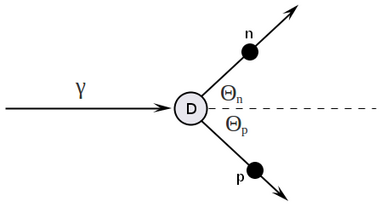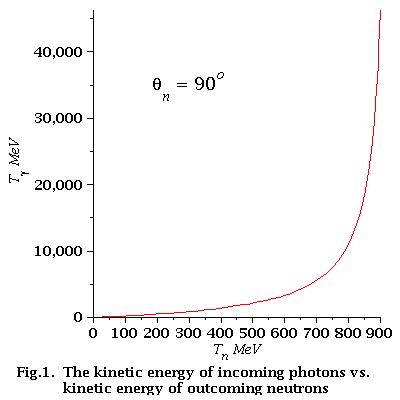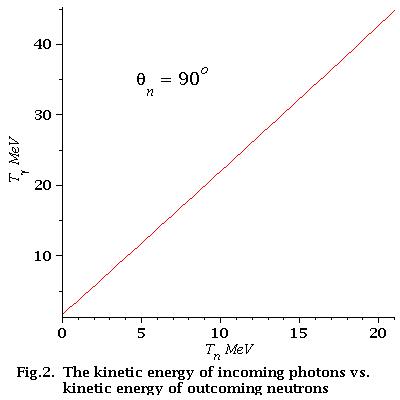Difference between revisions of "Neutron Polarimeter"
| Line 59: | Line 59: | ||
3. Predict the detected neutron energy based on the incident photon energy. | 3. Predict the detected neutron energy based on the incident photon energy. | ||
| − | |||
For the incident photons up to 25 MeV we have (0 - 11.69) MeV neutrons | For the incident photons up to 25 MeV we have (0 - 11.69) MeV neutrons | ||
| − | |||
For the incident photons up to 44 MeV we have (0 - 21.17) MeV neutrons | For the incident photons up to 44 MeV we have (0 - 21.17) MeV neutrons | ||
Revision as of 17:50, 5 April 2011
Four-vector Algebra
Let's do the four-vector algebra:
By conservation of four-momentum:
Squaring both side of equation above and using the four-momentum invariants we have:
Energy dependence of as function of neutron energy and neutron angle
We can easily solve the equation above with respect to incident photon energy:
Detector is located at , so
For non-relativistic neutrons , and we can neglect the in denominator, so
Substituting the corresponding masses, we get finally for the case of non-relativistic neutrons detected at the angle :
and visa versa:
Using the formulas above we can:
1. Calculate the threshold for reaction:
2. Predict the incident photon energy based on the detected neutron energy.
3. Predict the detected neutron energy based on the incident photon energy.
For the incident photons up to 25 MeV we have (0 - 11.69) MeV neutrons
For the incident photons up to 44 MeV we have (0 - 21.17) MeV neutrons
Also note:
and visa versa
how it looks
low energy approximation=
As we can see from Fig.2 for low energy neutrons (0-21 MeV)
energy dependence of incident photons is linear
Find that dependence. We have:
So, the equation of the line is:
Finally for low energy neutrons (0-21 MeV):
example of error calculation
==example 1=+
Say, we have, 10 MeV neutron with uncertainty 1 MeV, the corresponding uncertainly for photons energy is:
example 2
Say, the neutron's time of flight uncertainly is 1 ns
The neutron's kinetic energy is:
And:
Also we need the neutron's time of flight as function of neutron's kinetic energy:
Say, we have 10 MeV neutron, 1 m away detector, and neutron's time of flight uncertainty is 1 ns. Then the neutron time of flight is:
Neutron kinetic energy errors are:
And photon energy errors are:
Below are some examples for different detector distance and neutron kinetic energy:
| 1 ns | 1 m | 5 MeV | 0.103 | 32 ns | 0.31 MeV | 6.2 % | 0.64 MeV | 5.3 % |
| 1 ns | 1 m | 10 MeV | 0.145 | 23 ns | 0.88 MeV | 8.8 % | 1.81 MeV | 8.1 % |
| 1 ns | 1 m | 20 MeV | 0.203 | 16 ns | 2.51 MeV | 12.6 % | 5.16 MeV | 12.1 % |
| 1 ns | 1 m | 0.5 MeV | 0.033 | 102 ns | 0.010 MeV | 1.9 % | ||
| 1 ns | 1 m | 1 MeV | 0.046 | 72 ns | 0.028 MeV | 2.8 % | ||
| 1 ns | 1 m | 2 MeV | 0.065 | 51 ns | 0.078 MeV | 3.9 % | ||
| 1 ns | 1 m | 4 MeV | 0.092 | 36 ns | 0.22 MeV | 5.5 % |


